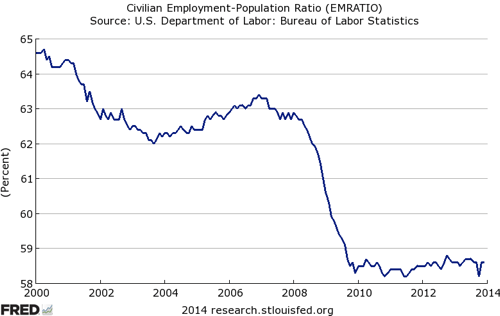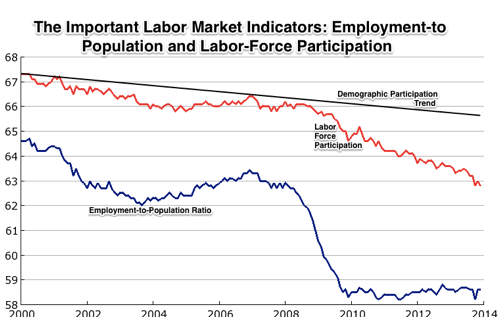At the tail end of 2013, Congress allowed emergency unemployment benefits for long-term unemployed workers to expire. A bill to restore these benefits is making its way through the Senate, but it faces an uncertain future in the House of Representatives. At the same time, the employment situation report released today shows that the labor force participation rate, or the share of the population that is employed or actively looking for employment, declined to 35-year low of 62.8 percent.
Some policymakers have argued that extending emergency unemployment benefits will harm unemployed workers, encouraging them to be dependent on the government and reducing their incentive or ability to find work. However, recent economic research on this topic finds the opposite to be generally true. As Congress debates whether to reinstate this program, they should be aware of recent research that shows extended unemployment benefits actually encourage workers to stay in the labor force and continue looking for work.
By looking at the differences in the extension of unemployment benefits among states, University of California, Berkeley economist Jesse Rothstein found that extended benefits keep long-term unemployed workers from dropping out of the labor force. This means that unemployment benefits give workers the added income boost that keeps them searching for a good job match.
However, because unemployment benefits keep unemployed workers in the labor supply, this means that the share of workers without a job in the labor force is larger than if those workers simply dropped out. According to Rothstein’s calculations, because unemployment insurance benefits kept people searching for work, it led to an increase in the unemployment rate of 0.2 percentage points from 2007 to 2009. That is not at all a bad thing – it’s an indication that the bulk of people receiving long-term unemployment benefits are continuing to look for work instead of giving up hope of finding employment.
More recent research from economists at Princeton University and the Federal Reserve Bank of San Francisco found similar results: extended UI benefits help keep workers attached to the labor force and looking for work.
These findings have clear implications for policymakers. As Rothstein wrote in his paper:
The evidence here thus supports the view that optimal UI program design would tie benefit durations to labor market conditions, to give those who have lost their jobs realistic chances of finding new employment before their benefits expire.
Members of Congress won’t be doing the long-term unemployed any favors by failing to extend unemployment benefits. Inaction would reduce some people’s incentive to find work, relegate millions of workers to poverty, and rob our economy of potential sources of growth.
Nick Bunker is a Research Associate at the Washington Center for Equitable Growth.



 Adrianna Macintyre:
Adrianna Macintyre: